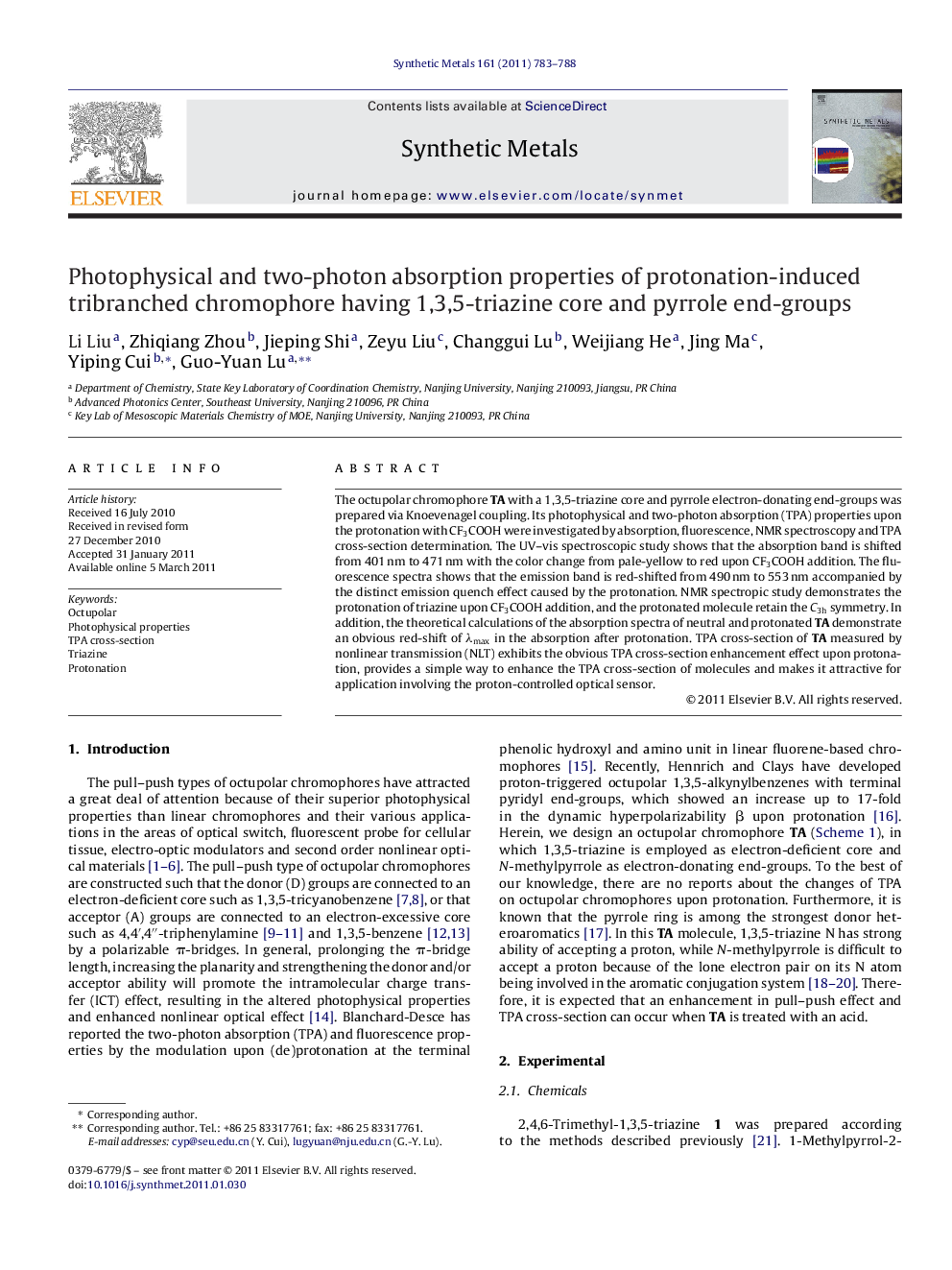| Article ID | Journal | Published Year | Pages | File Type |
|---|---|---|---|---|
| 1442062 | Synthetic Metals | 2011 | 6 Pages |
Abstract
The octupolar chromophore TA with a 1,3,5-triazine core and pyrrole electron-donating end-groups was prepared via Knoevenagel coupling. Its photophysical and two-photon absorption (TPA) properties upon the protonation with CF3COOH were investigated by absorption, fluorescence, NMR spectroscopy and TPA cross-section determination. The UV-vis spectroscopic study shows that the absorption band is shifted from 401 nm to 471 nm with the color change from pale-yellow to red upon CF3COOH addition. The fluorescence spectra shows that the emission band is red-shifted from 490 nm to 553 nm accompanied by the distinct emission quench effect caused by the protonation. NMR spectropic study demonstrates the protonation of triazine upon CF3COOH addition, and the protonated molecule retain the C3h symmetry. In addition, the theoretical calculations of the absorption spectra of neutral and protonated TA demonstrate an obvious red-shift of λmax in the absorption after protonation. TPA cross-section of TA measured by nonlinear transmission (NLT) exhibits the obvious TPA cross-section enhancement effect upon protonation, provides a simple way to enhance the TPA cross-section of molecules and makes it attractive for application involving the proton-controlled optical sensor.
Related Topics
Physical Sciences and Engineering
Materials Science
Biomaterials
Authors
Li Liu, Zhiqiang Zhou, Jieping Shi, Zeyu Liu, Changgui Lu, Weijiang He, Jing Ma, Yiping Cui, Guo-Yuan Lu,
